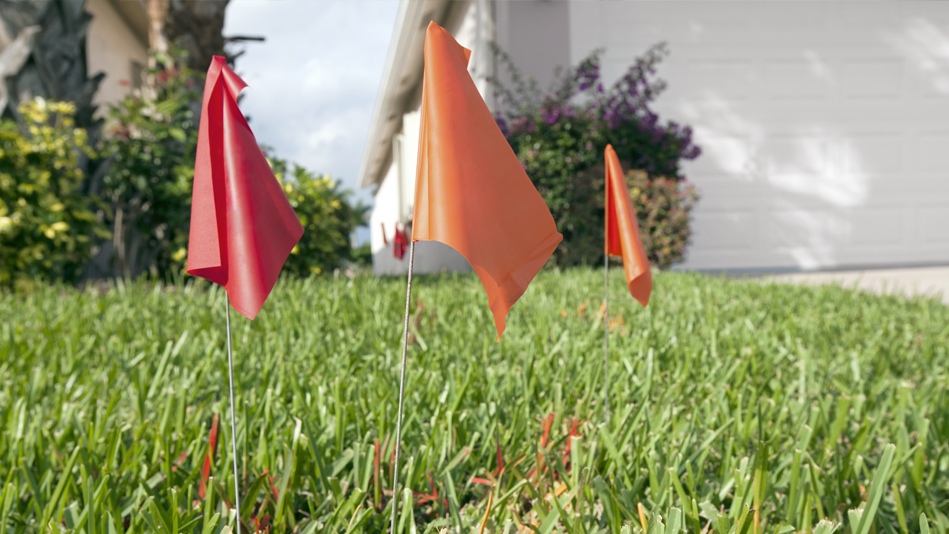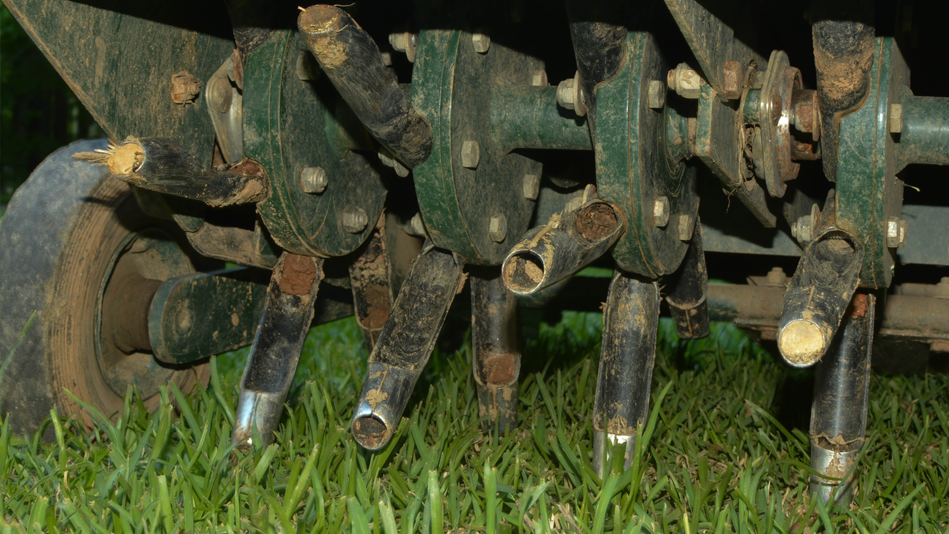Do you wish you could take pride in your lawn? If lush green grass feels out of reach (despite constant seeding, fertilizing, or even a water sprinkler system), learning how to aerate your lawn may be the answer to your prayers.
Why should you aerate your lawn?
As time goes by, all the people, animals, lawnmowers, and other things that cross your yard are causing the topmost layer of dirt and dead grass to compact down, creating a layer of thatch between the green grass and the roots below the soil. The more compact the thatch gets, the less air, water, and nutrition can get down to the roots of your grass, preventing healthy growth.
Aerating your lawn punches holes through this compacted layer of thatch, allowing the roots to get what they really need. It also allows any seed or fertilizer to get down where it’s really needed.

When should you aerate your lawn?
The best time to aerate your lawn is in early fall, a day or two after a thorough watering (whether by rain or your water sprinkler system). It’s a bad idea to aerate a lawn in the dead heat of summer, as it would likely cause further damage to grass already stressed from the high temperatures.
If it has been over a year (or forever) since your lawn has been aerated, it may be time to give it a try. But there are some signs you can watch out for as well:
- You have difficulty growing grass
- The grass is brown, thin, or patchy
- The yard has a lot of traffic
- It’s a sod-based lawn that has never been aerated
- The soil is hard, or there’s puddling where it used to soak up water
You can also perform something called the “screwdriver test”, which is pushing a regular screwdriver into your lawn’s soil with your hand. If it goes in easily, there’s no need to aerate. If it resists going in, aeration may be the way to go.
How to aerate your lawn
A little preparation here can save you money down the road, so make sure you start off right.

Flag the field
As aerators are quite heavy and force spikes or blades into the ground, you don’t want to roll over anything expensive to replace. Go through your yard and flag any decorations, water sprinkler heads or valves, or other immobile items to help you avoid them as you’re working the aerator.
Aerate your lawn with one of these 3 tools
Most lawn and garden stores or equipment rental companies will have aerators available to you for a half-day rental at a far lower price than purchasing one. Here are some options:
- Hollow coring tine aerators: These aerators punch into your lawn and remove a core of soil, effectively creating small holes throughout your yard. These are the most effective aerating tools, creating open spaces for roots to get fresh air, water, and nutrition. The soil cores can be left behind, as they will break down in a few days and naturally fertilize your yard. You may be tempted to mow them under, however be aware that this may dull your mower blades.
- Spike aerators: These will punch holes into your soil, and some homeowners prefer them because they don’t leave a trail of soil cores behind. However, as the spikes punch down into your soil, they can cause compaction from side to side instead. A spike aerator still helps to get the nutrition down to the roots, but it’s not as effective as a hollow coring tine aerator.
- Slicing aerators: A row of rotating blades slices thin paths into your soil, allowing the nutrition to get down to the roots. These have a similar effect as spike aerators, but are less likely to cause more compaction.
Pro tip: Each of these items will be heavily weighted for maximum aeration, but some weights may be removable for easier transportation. Be sure to inquire as you’re renting the unit.

Aerate your lawn
Now that you’ve flagged your yard and selected your tool of choice, aerating is much like mowing your lawn—you’ll push the aerator back and forth across your lawn. Once you’ve aerated your lawn fully in one direction, you’ll want to go back over it at least once more from a different direction. You may need multiple passes over extremely compacted areas, but you may also be able to leave healthy areas alone entirely.
Pro tip: Some aerators may require a raising and lowering mechanism to do turns, while others will let you turn much like a lawn mower would. Check with the associate as you’re renting the item to get the one best suited to your needs.
Once you’ve completed the process, now is a great time to water your lawn again, as well as to put down any additional seed or fertilizer as you see fit. If your water sprinklers aren’t acting quite right, these sprinkler system maintenance tips may help.
Visit us on Facebook, LinkedIn, Twitter or Instagram to tell us your thoughts!
